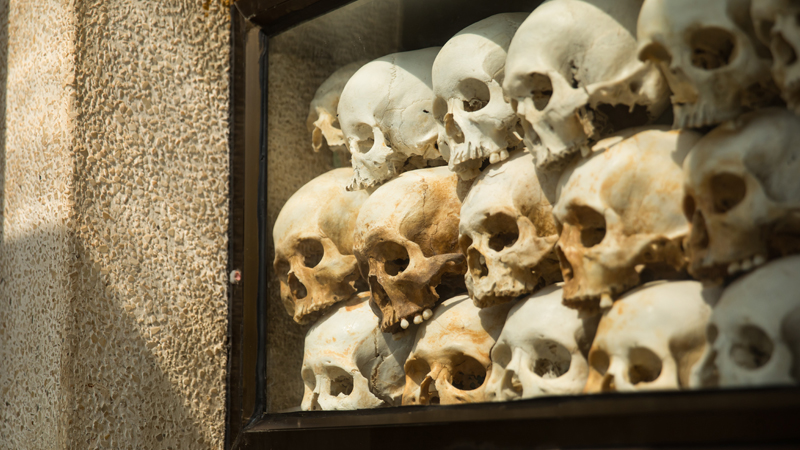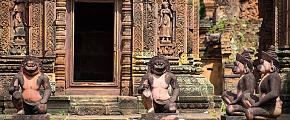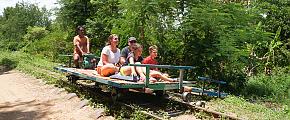Shall We Visit Dark Tourism Sites?
Dark tourism, which involves death and pain, has been popular for a long time. For example, people went to bloody gladiator games in ancient Rome, cruel public executions in the Middle Ages, and visits to morgues in Victorian England. At present, dark tourism is still a widely known form of tourism and is becoming increasingly popular among travelers. But some people might find themselves in a tough spot: Should we visit dark tourism sites, which are linked to the pain and suffering of others?
To go, or not to go? That is the question.
Visiting dark tourism sites is not part of a regular holiday schedule that is often relaxing and enjoyable; instead, this kind of visit makes visitors feel heavy most of the time. Some people avoid visiting these sites as they are unwilling to see the negative side. More importantly, they don't want to disturb those people who are still buried in grief.
The people of New Orleans, which was badly hurt by Hurricane Katrina in 2005, are a good example of this. After the terrible storm swallowed the city, the residents of the Lower Ninth Ward found that many tourists were wandering and taking pictures in their community. Residents were uncomfortable and unhappy with being gawked at as if they were animals in the zoo. Although the tour was quickly banned by the government, tourists still sneaked in.
Perhaps some of us really have no idea whether the disaster is better remembered or forgotten.
Talking about this recalls my memory back to my visit to the Killing Fields (Choeung Ek) and Tuol Sleng Prison Museum in Cambodia, which witnessed the nightmare that happened to two million Cambodian people in the 1970s. In 1975, the Khmer Rouge took control of Phnom Penh, and with the goal of turning Cambodia into an agrarian utopia, they began to persecute people who were educated or had religious beliefs, because these people were considered to have been influenced by foreign values.
 Choeung Ek (Killing Fields), Cambodia
Choeung Ek (Killing Fields), Cambodia
Today, these two sites have become very important memorial and educational centers for visitors.
It was one of the most memorable trips I've ever made.
When I passed through the gate, I found that everything was so quiet and peaceful. But as I walked deeper and deeper, my feeling was becoming heavier. I could hardly imagine what happened to these victims: little infants were killed with their heads smashed by rocks, children were beaten against trees, women were brutally tortured before being thrown into the pits, and lots of people were beaten to death because bullets were considered more valuable. It was disturbing, sorrowful, and a hard pill to swallow.
This was a deeply heartbreaking experience, but I was thankful I did it. It made me know more about the past and gave me a better understanding of the country. Cambodia was much more developed than neighboring counties, but after the nation was shocked by the Khmer Rouge, Cambodia lags behind the rest today. As for its people, almost every Khmer who's over 40 years old has lived through this horror. After I walked out, I couldn't help thinking: Do they survive now?
Walking along the street, I could see many smiling faces of people who are in their 40s and above: the cheerful old lady selling vegetables, the friendly middle-aged taxi driver, and the gentle restaurant owner. They had survived. I'm glad to see that the Cambodian people have come to heal as individuals, and fortunately, it turns out that this nation is growing and getting better. I hope it continues.
Apart from this, there are many other dark tourism sites in Asia, like Hiroshima Peace Memorial Museum (Japan) dedicated to documenting the atomic bombing in WWII, Cu Chi Tunnels (Vietnam) recording the local fighters' life during wartime, the War Remnants Museum in Ho Chi Minh City (Vietnam) presenting an important history of the appalling legacy of the war that ravaged Vietnam decades ago, Nanjing Massacre Memorial Hall (China) memorizing those people that were killed in the Nanjing Massacre, as well as the 2004 Indian Ocean earthquake and tsunami disaster, etc.
 War Remnants Museum in Ho Chi Minh City, Vietnam
War Remnants Museum in Ho Chi Minh City, Vietnam
Shall we visit dark tourism sites? As far as I am concerned, the problem doesn't lie with the destination we choose, but with the intention of the choice. Before we go, we need to ask ourselves a question: Are we traveling for a broader understanding or just to show off? Taking selfies and giving thumbs up in these locations? No. We visit these sites to prolong the memory of those who can't tell the story for themselves, and it's very important to know what, when, why, and how these cruel things happened. So, don't turn our backs on reality! And we must open our eyes to prevent similar things from happening again.
Now, I believe the answer to the question in the title is already in your mind. If you want to visit these dark tourism sites, you could contact us. We have rich experience in tailoring meaningful visits to dark tourism sites, and our knowledgeable local guides will share the vivid historical stories behind them with you. The tour will certainly improve your understanding of the country and change something in your life.



